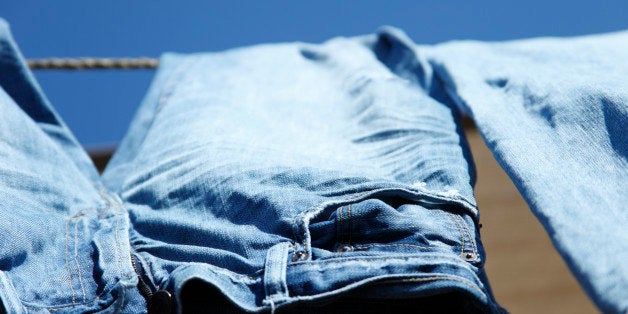
A couple weeks ago, I was in the grocery store picking up ingredients for my world famous guacamole; however, when I went to grab some limes, an essential component that adds a certain acidity and freshness, much to my chagrin, there were none. Disappointed, I grabbed some lime juice (the one that looks like a plastic lime) and headed home, only later to find out that a drought badly affected this year's yield of limes -- and many other crops.
While half the country is experiencing a drought, according to the latest numbers from the U.S. National Drought Monitor, the entire country feels it in some way whether it's as trivial as finding limes in the grocery store in New York City, or as serious as wildfires in California. With this, I wanted to make light of one of the biggest, unknown water hogs, textile production, and what we, as a society, can do to help, textile donating and recycling.
Textile production does not only heavily rely on water availability for growth, but its use of pesticides for growing fiber crops and the discharge of waste water from dyeing it directly impacts the global water profile. For example, one pair of stonewashed jean requires about 500 gallons of water to make, including water used to grow, dye and process the cotton.
With access to water becoming increasingly complicated through a growing population and climate change, the textile and apparel industry's heavy reliance on thirsty cotton crop will shift and we'll see technological advancements. However, until -- and after -- that happens, we can and should be doing are part to help by donating and recycling our used textiles.
Every year, Americans throw away about 11.1 million tons of textiles -- t-shirts, pants, blankets, etc. While it all may not be reusable, a good portion of it is. If we were to donate what is reusable, we could presumably produce that much less textile, which would save us water. In addition to saving water, there's also the added benefit of clothing the needy. A true win-win.
Take my company, SpinGreen, for example. We're a textile recycling company operating in the New York Metro Area that was founded a little over a year ago. Through collection bins set up at over 600 partnering locations, we have already collected three million pounds of textiles, which we estimate has saved about one billion gallons of water and clothed countless needy New Yorkers.
In addition to textile recycling companies like mine, there are more than a dozen local governments -- in Arizona, Massachusetts, New Jersey, Pennsylvania and Washington state -- that have begun curbside pickup of textiles. New York City also has clothing collection bins in nearly 250 apartment buildings.
There are also businesses that are placing collection bins in parking lots. For example, H&M and The North Face, and other retailers have begun using in-store bins to offer customers store vouchers for donating clothes -- whatever the brand, and sometimes, whatever the condition.
So the next time you go to throw away an old pair of jeans or t-shirt, make sure you check to see if your building, city, place of employment or even your kid's school has a textile recycling program. Together, we can help to prevent the terrible consequences of droughts and better ensure that guacamoles across the country are getting the real limes they deserve.
